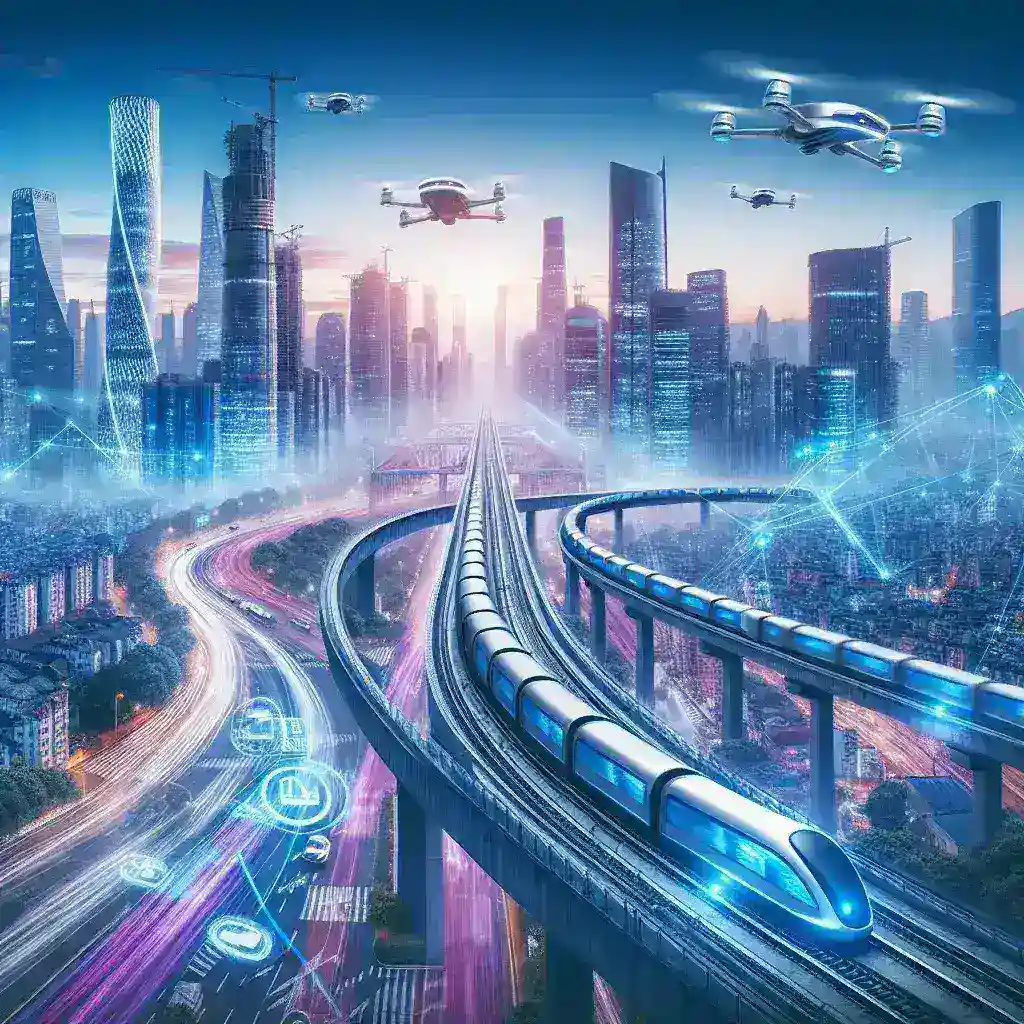Introduction
As urban areas across the globe continue to grow, the demand for more efficient and sustainable mobility solutions becomes imperative. Artificial Intelligence (AI) has emerged as a transformative technology capable of reshaping urban mobility. From smart transportation systems to data-driven city planning, AI holds the potential to revolutionize how we navigate through cities, improving both efficiency and quality of life. In this article, we will delve into the future of AI in enhancing urban mobility and explore the various applications and benefits this technology can bring.
Smart Transportation Systems
One of the most significant impacts of AI on urban mobility is the development of smart transportation systems. These systems leverage AI technologies to optimize traffic flow, reduce congestion, and improve overall transportation efficiency. Here are some key components:
1. Intelligent Traffic Management
AI can analyze real-time traffic data from various sources such as cameras, sensors, and GPS devices to manage and control traffic signals dynamically. This allows for smoother traffic flow and minimizes waiting times at intersections.
2. Autonomous Vehicles
Self-driving cars equipped with AI algorithms can navigate through urban environments with minimal human intervention. These vehicles can reduce accidents, lower emissions, and make transportation more accessible for people with disabilities.
3. Predictive Maintenance
AI-powered predictive maintenance systems can monitor the condition of public transportation vehicles and infrastructure in real-time. By identifying potential issues before they become critical, these systems can reduce downtime and improve service reliability.
Data-Driven Urban Planning
AI plays a crucial role in urban planning by analyzing large datasets to identify patterns and trends. This data-driven approach enables city planners to make informed decisions that enhance urban mobility. Here are some ways AI is contributing:
1. Optimized Public Transport Routes
By analyzing commuter behavior and traffic patterns, AI can help design more efficient public transport routes. This ensures that buses and trains are where they are needed most, reducing waiting times and overcrowding.
2. Infrastructure Development
AI can predict future urban growth and its impact on transportation needs. This allows planners to develop infrastructure projects that accommodate future demand, such as new roads, bike lanes, and pedestrian pathways.
3. Sustainable Mobility Solutions
AI can help cities reduce their carbon footprint by promoting sustainable mobility options. For example, AI can optimize bike-sharing systems by predicting demand and ensuring bikes are available at key locations.
Enhancing Public Safety
AI also has the potential to enhance public safety within urban areas. Through sophisticated surveillance systems and predictive algorithms, AI can help reduce crime rates and ensure a safer environment for residents and visitors:
1. Predictive Policing
AI can analyze crime data to identify hotspots and predict where crimes are likely to occur. This allows law enforcement agencies to allocate resources more effectively and respond proactively to prevent criminal activities.
2. Emergency Response
AI-powered systems can analyze emergency calls and real-time data to provide faster and more accurate responses. For instance, AI can identify the fastest route for emergency vehicles, reducing response times and potentially saving lives.
3. Public Surveillance
AI-enhanced surveillance systems can monitor public spaces and detect suspicious behavior. By alerting authorities to potential threats, these systems can help prevent incidents and increase overall public safety.
Impact on the Environment
The implementation of AI in urban mobility has significant environmental benefits. By optimizing transportation systems and promoting sustainable mobility, AI can help reduce pollution and create greener cities:
1. Reduced Emissions
AI can optimize traffic flow and reduce idling times, leading to lower vehicle emissions. Additionally, autonomous vehicles are often electric, contributing further to emission reductions.
2. Promoting Public Transport
By making public transport more efficient and user-friendly, AI encourages more people to use buses, trains, and other forms of public transport, reducing the number of private vehicles on the road.
3. Encouraging Active Transportation
AI can promote walking and cycling by designing safer and more convenient routes. This not only reduces traffic congestion but also promotes a healthier lifestyle among urban residents.
Challenges and Considerations
While AI offers numerous benefits for urban mobility, there are also challenges and considerations that need to be addressed:
1. Data Privacy
AI systems rely on vast amounts of data, raising concerns about privacy and data security. It is essential to establish robust data protection measures to ensure that personal information is handled responsibly.
2. Technological Integration
Integrating AI into existing urban infrastructure can be complex and costly. Cities need to plan and invest carefully to ensure a smooth transition and avoid disruptions.
3. Regulatory Framework
Developing appropriate regulations and standards for AI in urban mobility is crucial. This includes ensuring the safe deployment of autonomous vehicles and addressing ethical considerations around AI decision-making.
Conclusion
The future of AI in enhancing urban mobility is promising, offering numerous opportunities to create more efficient, sustainable, and safer cities. By leveraging AI technologies, urban areas can optimize transportation systems, improve urban planning, and enhance public safety. However, it is essential to address the associated challenges and ensure that AI is implemented responsibly to maximize its benefits for all residents.

